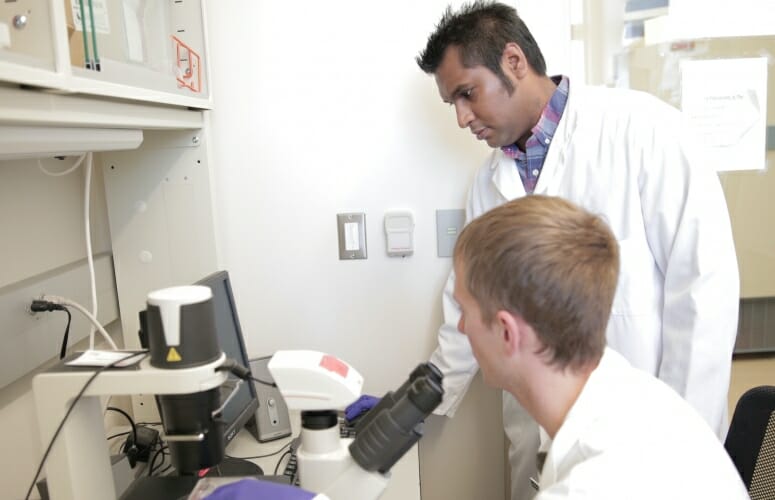12 Dec Multiple gene edits and computer simulations could help treat rare genetic diseases

The lab of Kris Saha (standing) has developed an innovative combination of gene-editing tools and computational simulations that can be used to develop new strategies for editing genes associated with genetic disorders. PHOTO: STEPHANIE PRECOURT
The lab of Kris Saha at the University of Wisconsin–Madison has developed an innovative combination of gene-editing tools and computational simulations that can be used to develop new strategies for editing genes associated with genetic disorders.
In proof-of-concept experiments, the lab’s researchers efficiently corrected multiple mutations responsible for a rare metabolic disorder, known as Pompe disease, in cells containing the disease-causing errors. They also used computer simulations to design the ideal gene-editing approach for treating human patients, a boon for rare disorders like Pompe disease that lack useful animal models.
Their promising platform advances the CRISPR genome-editing field and could lead to effective treatments for many diseases, not just Pompe disease.
“The exact mutations seen in the Pompe patients are not in an existing animal model, so we cannot do all of the preclinical studies that we would like to do in order to evaluate the safety and efficacy of different genome editing strategies,” says Saha, a professor of biomedical engineering at UW–Madison’s Wisconsin Institute for Discovery. “We need a way to think about how we go from patient material to a therapy without having to build an animal model, a process that takes months to years and hundreds of thousands of dollars.”
Saha’s team published its findings Dec. 8 in the journal Nature Communications.



